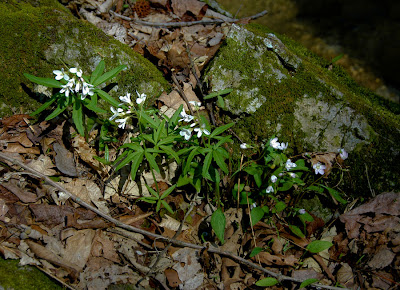Northern Cardinals, Carolina Wrens, and American Robins have been the primary voices that I've heard this week (they've had to push themselves into my consciousness as I've been enveloped in writing and layout on our spring newsletter -- uh, work stuff). Hhrmph!
Hopefully, I'll have more time next week during spring break to listen more carefully.
I did see one of our (that is, the SC Botanical Garden's) red-shouldered hawk pairs early in the week -- it looked like the male was transferring something to eat to the female (maybe for nestlings?) Possibly it was for her, but I do think they'd have nestlings by now in mid-March.
I'm looking forward to seeing if any of my early cool-season vegetable seed sowings in the mountains have done much this weekend. It's been cool, and rainy, so reasonable weather, but the temperatures have also been quite cold.
Hopefully, I'll have more time next week during spring break to listen more carefully.
I did see one of our (that is, the SC Botanical Garden's) red-shouldered hawk pairs early in the week -- it looked like the male was transferring something to eat to the female (maybe for nestlings?) Possibly it was for her, but I do think they'd have nestlings by now in mid-March.
I'm looking forward to seeing if any of my early cool-season vegetable seed sowings in the mountains have done much this weekend. It's been cool, and rainy, so reasonable weather, but the temperatures have also been quite cold.







.jpg)
.jpg)



